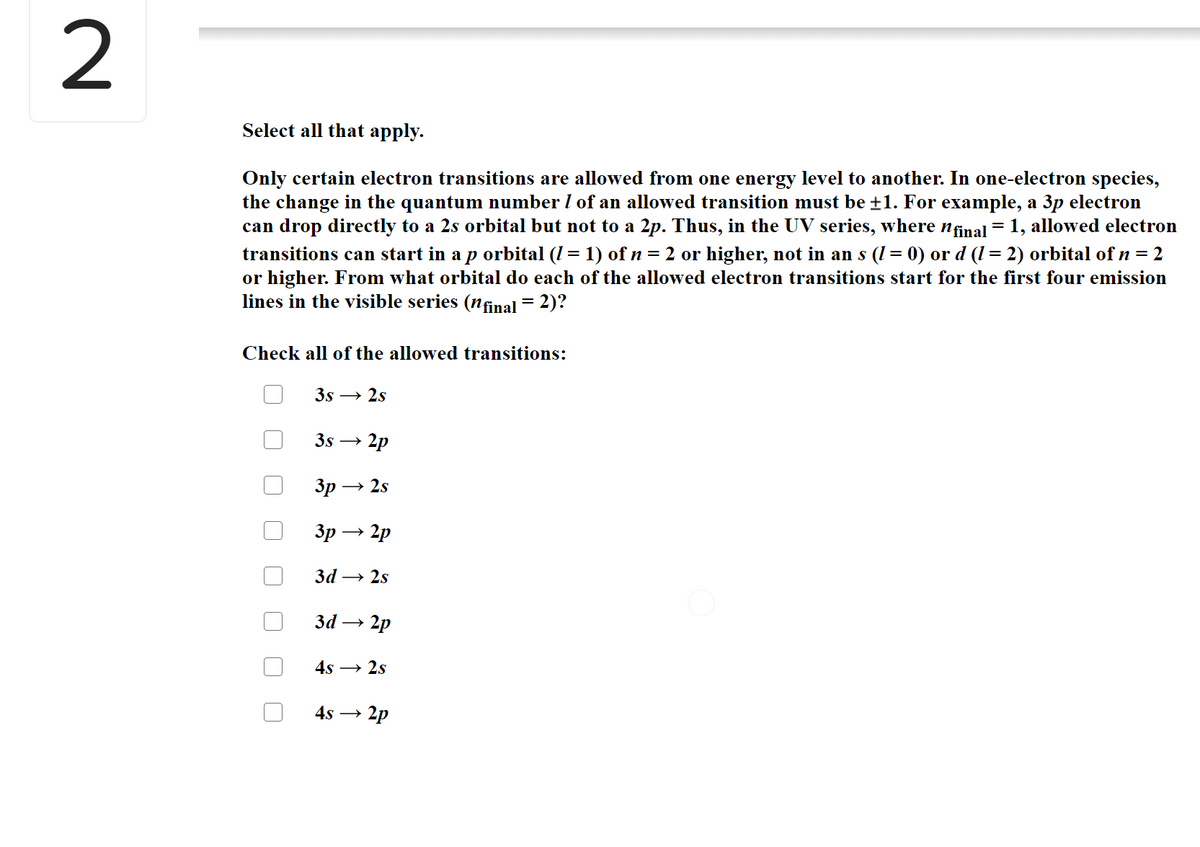Select all that apply. Only certain electron transitions are allowed from one energy level to another. In one-electron species, the change in the quantum number I of an allowed transition must be ±1. For example, a 3p electron can drop directly to a 2s orbital but not to a 2p. Thus, in the UV series, where nfinal = 1, allowed electro transitions can start in a p orbital (I = 1) of n = 2 or higher, not in an s (I= 0) or d (1 = 2) orbital of n = 2 or higher. From what orbital do each of the allowed electron transitions start for the first four emission lines in the visible series (nfinal = 2)? Check all of the allowed transitions: 3s → 2s 3s — 2р Зр — 2s Зр — 2р За — 2s 3d - - 2p 4s → 2s 4s > 2p
Electronic Transitions and Spectroscopy
The term “electronic” connotes electron, and the term “transition” implies transformation. In a molecule, the electrons move from a lower to a higher energy state due to excitation. The two energy states, the ground state and the excited state are the lowest and the highest energy states, respectively. An energy change is observed with this transition, which depicts the various data related to the molecule.
Photoelectron Spectroscopy
Photoelectron spectroscopy (PES) is a part of experimental chemistry. It is a technique used in laboratories that involves projecting intense beams of radiation on a sample element. In response, the element ejects electrons for which the relative energies are measured.

Trending now
This is a popular solution!
Step by step
Solved in 2 steps









